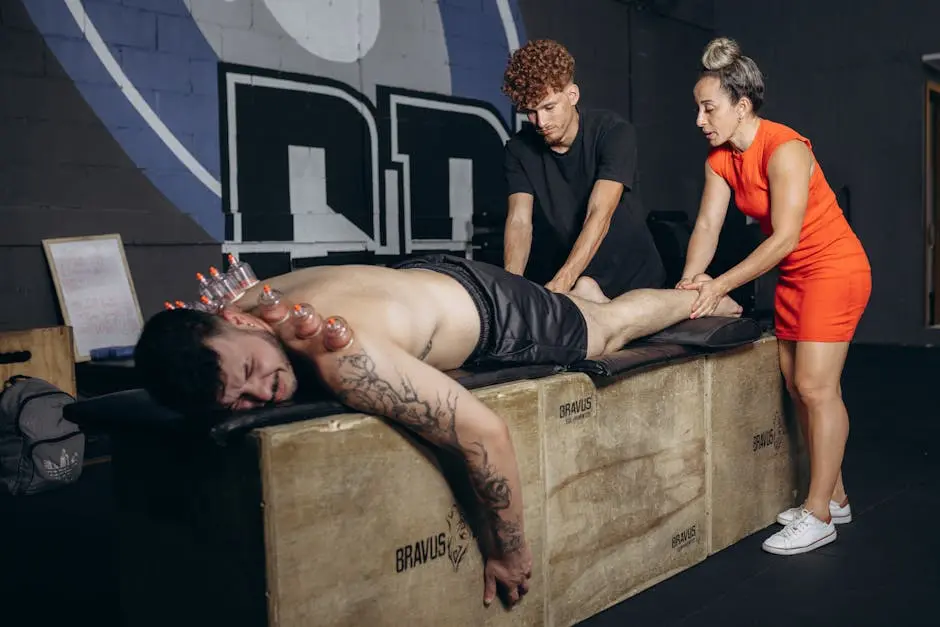Navigating through a sports injury can be challenging, but a sports rehabilitation program can help expedite your recovery. Understanding what to expect from this journey is crucial for a successful recovery. In this blog, we’ll break down the key components of a sports rehabilitation program, ensuring that you feel informed and prepared.
Understanding Your Injury
The first step in any sports rehabilitation program is to understand your specific injury. This involves a thorough assessment by a qualified professional who can explain the nature and extent of your injury.
Knowing the specifics of your injury not only keeps you informed but also empowers you throughout the rehabilitation process. You’ll learn about common terms related to your condition, which will help demystify the healing process. An open dialogue with your therapist can clarify concerns and set a solid foundation for recovery.
Additionally, understanding the mechanisms behind your injury will enable your rehabilitation team to tailor treatment effectively. You might discuss how the injury happened and what factors might have contributed to it, such as improper technique or insufficient conditioning. By grasping these elements, you can actively participate in your recovery and avoid similar injuries in the future.
Setting Realistic Goals
Once you understand your injury, the next step is setting achievable goals. These goals should be tailored to your individual needs and the demands of your sport.
Setting realistic, measurable, and time-bound goals is a crucial part of your rehabilitation journey. Think of it as creating a roadmap for recovery, guiding you from where you are now to where you want to be. Perhaps your first goal is to regain full range of motion or to manage pain effectively—whatever it is, it’s essential to discuss these goals with your therapist.
Creating small milestones can help you track your progress and stay motivated. For instance, if your goal is to return to running, you might set a mini-goal of walking for 10 minutes. Celebrating small victories not only boosts your morale but reinforces that you’re on the right path towards achieving your larger objectives.
Creating a Customized Rehabilitation Plan
A personalized rehabilitation plan will be developed to address your specific injury and goals. This plan may include exercises, stretches, and other therapeutic techniques tailored to your recovery.
Your rehabilitation plan is like a unique blueprint designed just for you. It takes into account not only your injury but also your overall health, fitness level, and any other factors that might impact your recovery. You may find it helpful to have this plan written down, as it solidifies your commitment to the journey ahead.
Moreover, a customized plan may incorporate a variety of techniques including manual therapy, strength training, and neuromuscular re-education. Depending on the extent of your injury, some plans might even integrate modalities such as ice therapy or electrical stimulation to accelerate healing. Regular meetings with your therapist will ensure the plan evolves as you progress.
Progress Monitoring and Adjustments
Throughout the rehabilitation process, progress will be monitored closely. Adjustments will be made to your plan as needed to ensure that you are on track for recovery.
Monitoring your progress is an ongoing commitment on the part of both you and your rehabilitation team. During each session, your therapist will assess how well you’re meeting your goals and whether adjustments are necessary. Flexibility is key; should something not feel quite right, don’t hesitate to voice your concerns.
Adjustments to your rehabilitation plan may involve modifying exercises, increasing intensity, or introducing new techniques altogether. This dynamic approach not only helps keep you engaged but also optimizes your recovery time, allowing you to heal efficiently and effectively. Regular feedback from you plays an essential role in this process, ensuring that you feel supported every step of the way.
Returning to Sport Safely
The final step is preparing for a safe return to your sport. This involves gradually reintegrating into your activity while ensuring that you don’t rush the recovery process.
After months of rehabilitation, it’s only natural to feel excited about returning to your beloved sport. However, it’s vital to approach this phase with caution. Your therapist will likely recommend a gradual return, starting with low-impact activities and scaling up as your body adapts. This protects you from re-injury and helps you re-establish your skills in a safe environment.
Additionally, keep in mind that mental readiness is just as important as physical readiness. It’s common for athletes to experience anxiety about getting back into the game. Engaging with your therapist about this psychological aspect can be immensely beneficial—you might even explore visualization techniques or other mental strategies to boost your confidence.
Wrapping It Up
In summary, a sports rehabilitation program is designed to support your recovery journey with a tailored approach. By understanding the stages and components of the program, you can navigate through your rehabilitation with confidence and clarity.





